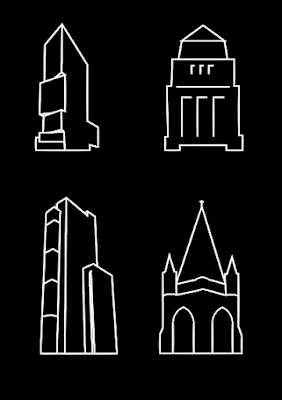Continuing on from my research into Uk road signs, I've decided to explore road signs found around the world and compare the ways in which they differ from one another.
Different countries have different systems used on the road. Differing in colour, language, typeface and many more.
 There are, however, some factors that often stay the same wherever you are around the world. Take STOP signs for example. On the right is a grid of a number of STOP signs around the world. They all use the same shape and colours. This allows any road user to understand the sign even if they don't understand the language used.
There are, however, some factors that often stay the same wherever you are around the world. Take STOP signs for example. On the right is a grid of a number of STOP signs around the world. They all use the same shape and colours. This allows any road user to understand the sign even if they don't understand the language used.
Another way in which road signs can differ in different countries is the difference in environment. A sign warning people of kangaroos would not be suitable in most other countries but in Australia it's a must.

Road signs in Havana, Cuba
I've come across a series of road signs that have really taken my interest through their use of colour. The signs below use pinks, light greens and bright yellows for wayfinding around town. These, compared with UK road signs, are so much more exciting and aesthetically pleasing yet at the same time are just as functional.
From these I aim to produce road signs for Leeds using vibrant colours that will still work for legibility and readability but that will suit the energetic environment of Leeds.
Original Pantone range used for all UK road signs
186 C - Warning signs
300 C - Motorways
116 C - Waiting restrictions
346 C - Direction signs
469 C - Tourist signs
370 C - Fire Rendezvous signs
1375 C - Emergency phone labels
Revised Pantone range inspired by Havana road signs
The next step of my project was to implement this revised range of pantone colours onto road and footpath signs to see how they will look on the streets of Leeds.
I have allocated each pantone colour to a specific architectural structure around Leeds. This allows for the wayfinding to be read more easily and quickly as the road user or pedestrian can simply look for a colour, as apposed to a name, to direct them to their desired location.

















































